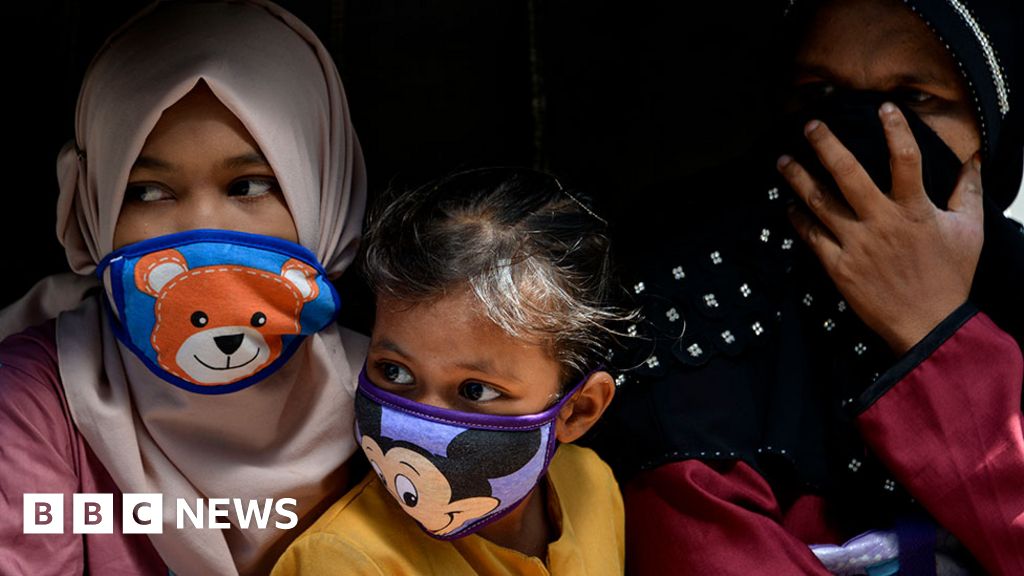
Coronavirus pandemic: Tracking the global outbreak

Image copyright
Getty Images
Coronavirus is continuing its spread across the world, with more than 4.7 million confirmed cases in 188 countries. More than 300,000 people have lost their lives.
This series of maps and charts tracks the global outbreak of the virus staunch it emerged in China in December last year.
How many cases and deaths have there been?
The virus, which causes the respiratory infection Covid-19, was edifying detected in the city of Wuhan, China, in late 2019.
It then spread like a flash across the globe in the first months of 2020.
Note: The map and substandard in this page use a different source for figures for France from that used by Johns Hopkins University, which results in a slightly lower overall total.
The US has by far the largest number of cases, according to figures collated by Johns Hopkins University. With more than 89,000 fatalities, it also has the world's highest death toll.
France, Italy, Spain and the UK - the worst-hit European countries - have all recorded more than 27,000 deaths.
In China, the official death toll is some 4,600 from about 84,000 confirmed cases, although critics have questioned whether the country's official numbers can be trusted.
The outbreak was declared a global pandemic by the World Health Organization (WHO) on 11 March. This is when an infectious disease is passing easily from person to person in many parts of the world at the same time.
The true number of cases is concept to be much higher than the reported figures, as many of those with milder symptoms have not been tested and counted.
Globally, more than 4.5 billion people - half the world's population - have been living thought social distancing measures, according to the AFP news agency's estimates.
Those restrictions have had a big impact on the global economy, with the International Monetary Fund warning the world faces the worst recession proper the Great Depression of the 1930s.
The United Nations World Food Programme has also warned that the pandemic could almost double the number of people suffering acute hunger.
Where are coronavirus cases peaceful rising?
While some countries are starting to see confirmed cases and deaths fall following the introduction of strict lockdown restrictions, others are only now seeing them rise.
A spirited increase in cases in Latin America has led the WHO to say the Americas are currently at the centre of the pandemic.
These charts show four countries where deaths are on an upward trajectory - as shown by the red lines.
Brazil now has the fourth highest number of infections in the world - overtaking Spain and Italy. However, the country's health experts have warned that the real number of confirmed infections could be far higher, due to a lack of testing.
Bruno Covas, mayor of Brazil's largest city, São Paulo, has warned its health system could collapse because of the growing inquire of for emergency beds.
Mexico has also seen a spike in new infections, while Ecuador saw its health system collapse in April.
Outside South America, Russia has seen infections rise speedy and now has the second highest number worldwide, according to official data. It has been reporting around 10,000 new cases a day for over a week.
In Africa, Lesotho confirmed its apt cases on 13 May, which means coronavirus is now portray in all countries on the continent, mainly in urban populations. Worst-hit are South Africa, Egypt and Algeria.
Europe continues to see cases and deaths fall
After being labelled the "epicentre of the pandemic " by the WHO in March, Europe is now slowly beginning to ease restrictions brought in to slow the spread of the virus.
The UK, Italy, Spain and France, along with others, now recede to have passed the peak, with the number of new confirmed cases and deaths falling.
The UK and Italy have seen more than 30,000 deaths, while France and Spain have recorded more than 28,000 and 27,000 respectively.
However, differences in population size and how countries portray their figures, with some including deaths in care homes, or deaths of those suspected but not confirmed of having the virus, means international comparisons are complicated.
European countries have varied in their plans to ease lockdowns, but the WHO has urged all nations to adopt a "slow, steady" approach.
New York the worst-hit in US outbreak
With more than 1.4 million cases, the US has the highest number of confirmed infections in the world. It has also recorded more than 89,000 deaths.
The spot of New York has been particularly badly affected, with more than 28,000 deaths, but the number of new cases there has been on a downward trend in fresh weeks.
At one exhibit, more than 90% of the US population was thought mandatory lockdown orders, but many states have now begun to loosen their stay-at-home restrictions and allowed some businesses to reopen - a move health officials fear could further spread the virus.
Only 14 US states have met the federal recommended guidelines for reopening - which suggest a decline in new cases daily for two weeks - according to a seek by Reuters.
The top US infectious diseases doctor Anthony Fauci has cautioned against opening up public life too soon, warning of further "little spikes" which would become outbreaks.
President Trump, who disagrees with Dr Fauci's advice, has made it certain he is keen to reopen the US economy "vaccine or no vaccine". He was speaking on Friday at the start of a project aiming to deliver a coronavirus jab by the end of the year.
The chairman of the Federal Reserve, Jerome Powel, has warned the US economy could "easily" contract by 20-30% amid the pandemic and the downturn noteworthy last until late 2021.
The latest figures show more than 36 million people have lost their jobs proper the outbreak hit the US. That's nearly a quarter of the American workforce.
The rise means the jobless rate is now worse than at any time proper the Great Depression of the 1930s.
About this data
The data used on this page comes from a variety of sources. It includes figures collated by Johns Hopkins University, data from the European Centre for Disease Prevention and Control, national governments and health agencies, as well as UN data on populations.
When comparing figures from different countries it is important to bear in mind that not all governments are recording coronavirus cases and deaths in the same way. This makes like for like comparisons between countries difficult.
Other factors to noteworthy include: different population sizes, the size of the a country's elderly population or whether a particular country has a gigantic amount of its people living in densely populated areas. In addition, countries may be in different stages of the pandemic.
Thanks for reading our article. Please share it with pleasure.
Coronavirus pandemic: Tracking the global outbreak - BBC News was released by www.bbc.co.uk
powered by Blogger News Poster



0 Comments